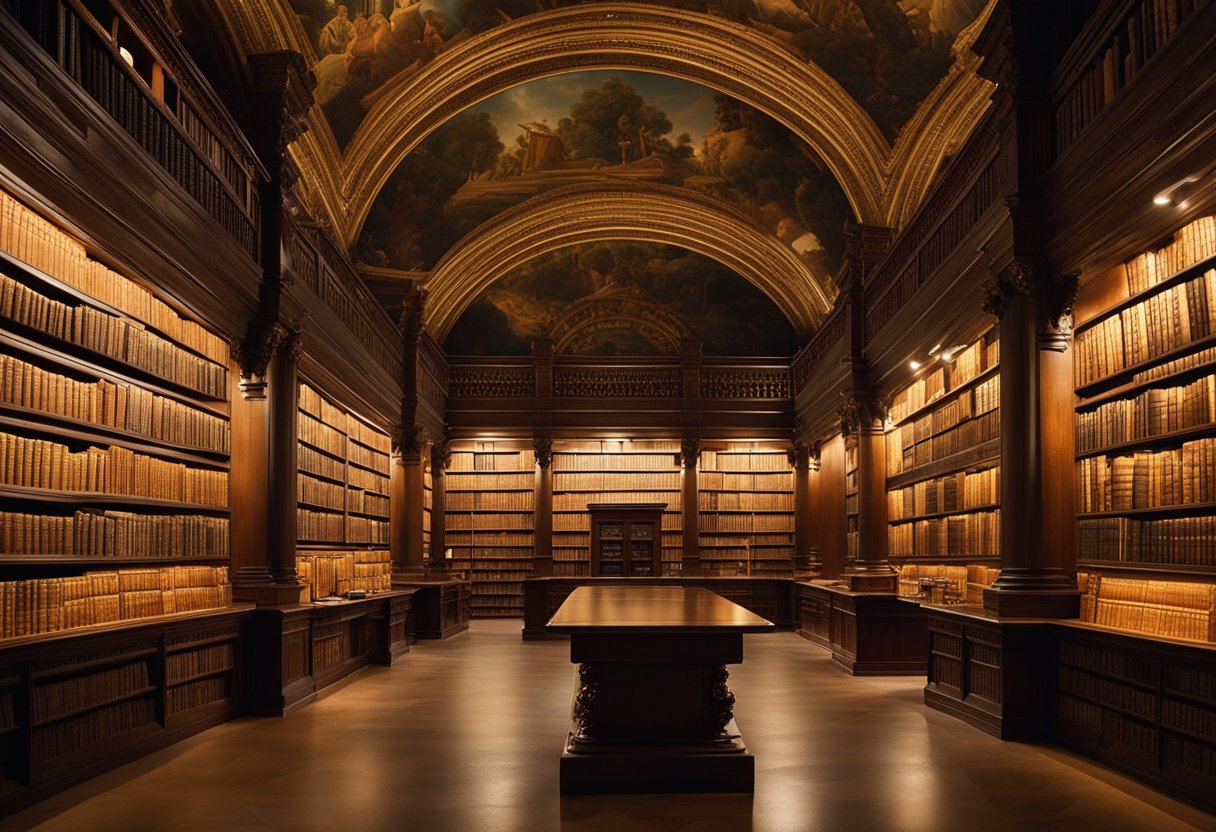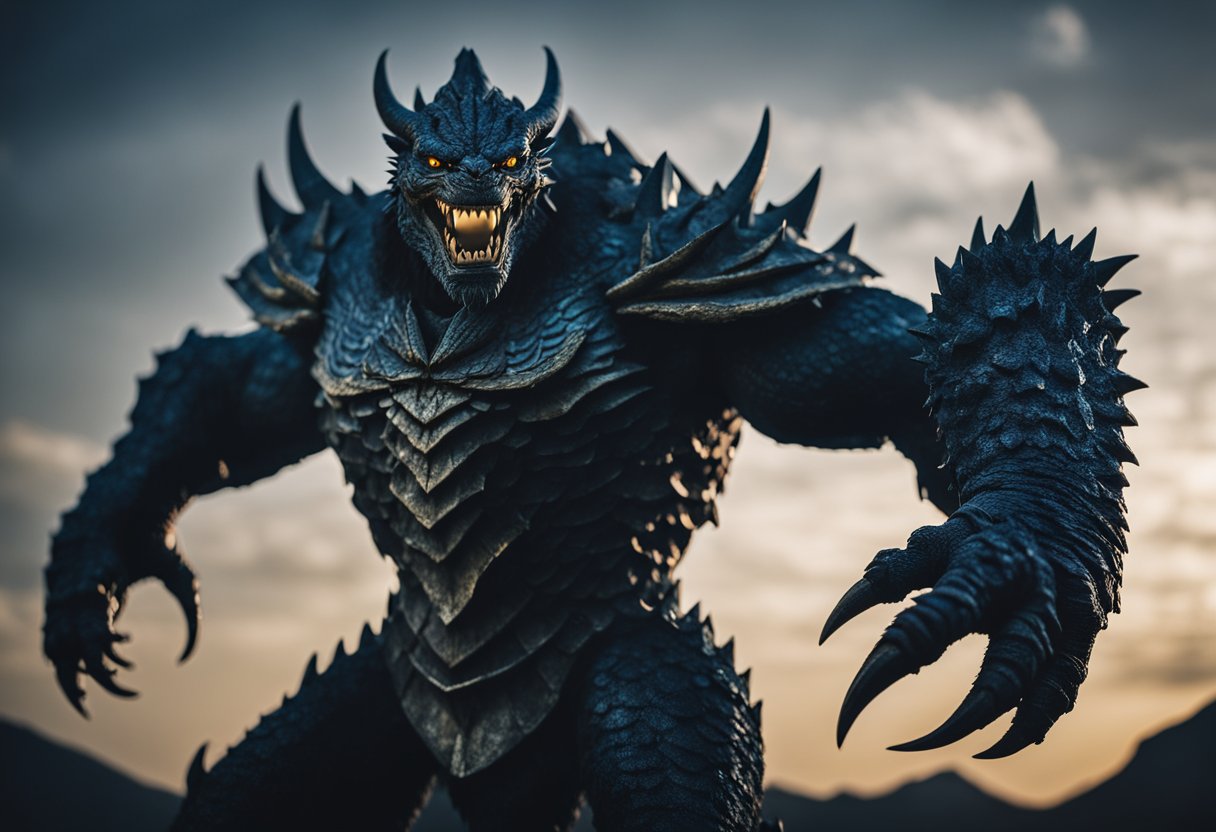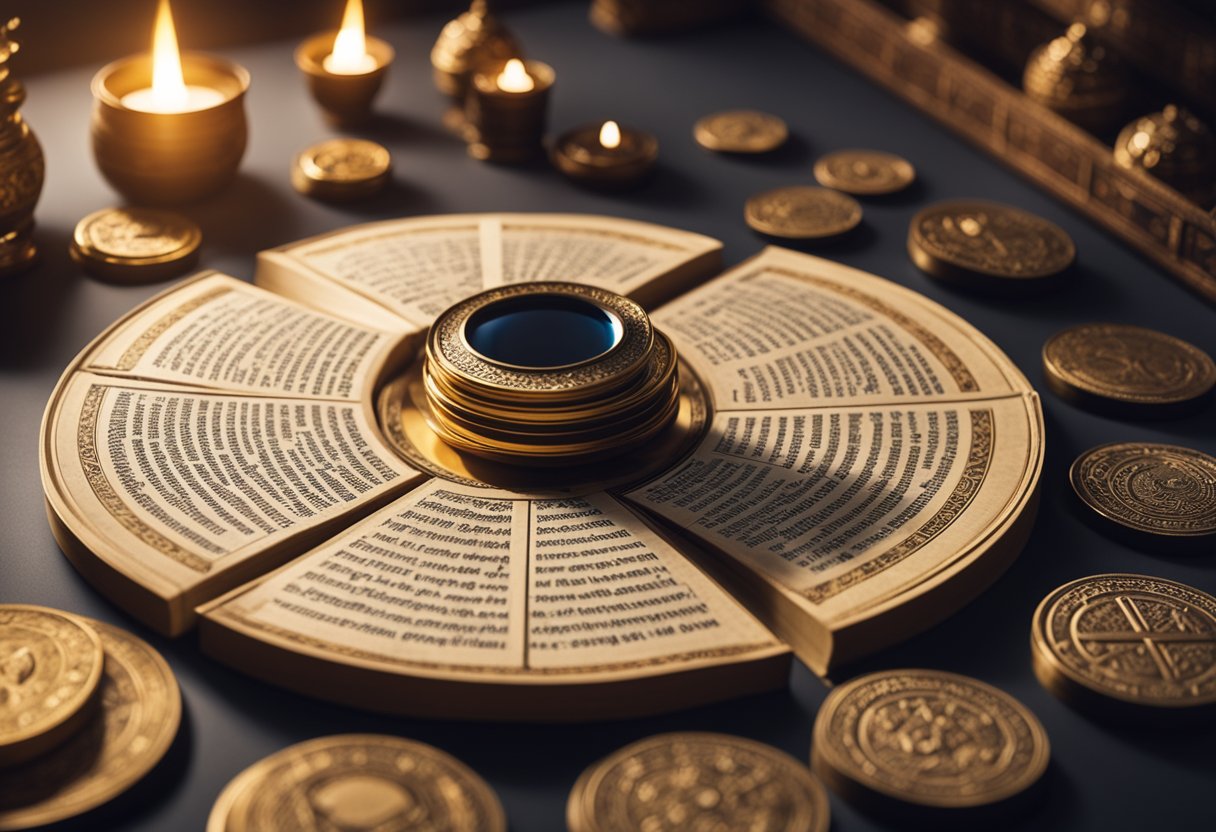Epic Tales: Exploring Global Sagas from Gilgamesh to the Mabinogion

Updated On: April 22, 2024 by Maha Yassin
Epic tales have been the cornerstones of cultural narratives, serving as vast canvases that paint the human experience across time and geography. From the ancient Sumerian Epic of Gilgamesh to the Celtic tales of the Mabinogion, these stories stretch the expanse of world literature, providing insights into the values, struggles, and aspirations of civilizations. Through the voices of heroes, monsters, and gods, these narratives have transcended their origins to become universal touchstones of our collective identity.
The threads of mythological and historical contexts are Woven into the fabric of these epics. Characters embark on monumental quests, challenge formidable adversaries, and grapple with the concept of immortality. The literary devices employed in these tales are as intricate as the stories themselves, employing poetic structures that have influenced storytelling across cultures. As we unravel the complexities of these epics, we encounter a myriad of themes and motifs that are as relevant today as they were millennia ago.
The Origins of Epic tales and Storytelling
In our exploration of epic tales, we recognise that storytelling is as ancient as civilisation itself, stemming from a deep-rooted desire to understand our world and share that understanding with others. The epics of old are not just stories; they are cultural artefacts that offer us a glimpse into the lives and beliefs of ancient peoples.
Mesopotamian Roots and Sumerian Traditions
Mesopotamia, often called the cradle of civilisation, gave birth to one of the world’s first great epics: The Epic of Gilgamesh. Originating from Sumer, Gilgamesh is a seminal work that predates even Homer’s famous epics by centuries. These narratives were born from the Sumerian storytelling tradition, which sought to immortalise the deeds of heroes and gods alike. It’s through the Sumerian language, etched into clay with cuneiform, that we have inherited such rich narratives that still resonate today.
Library of Ashurbanipal: This was a knowledge repository where thousands of cuneiform tablets from ancient Mesopotamia were housed. Among these were the narratives of Gilgamesh that have survived through millennia, allowing us to piece together their epic tales.
The Role of Cuneiform in Epic Tales
Cuneiform script was the medium through which the Sumerians, and later the Akkadians, would immortalise their stories. Far more than mere writing, cuneiform was a key innovation, allowing Sumerian and Akkadian languages to be recorded and preserved on clay tablets. This was critical in the transformation from oral to written storytelling—a revolution that let these tales endure beyond the lives of their storytellers.
Developed in ancient Mesopotamia, the cuneiform script was once the domain of scribes who played a crucial role in society. Their skills ensured that generations to come would remember the epic tales. The transfer of stories from words spoken to words written was, perhaps, one of the most profound leaps in the history of storytelling, solidifying epics like Gilgamesh in the collective memory of our civilisation.
Gilgamesh: The Seminal Epic
The Epic of Gilgamesh emerges as a foundational work in the annals of literature, charting the odyssey of a king’s quest that touches upon the universal themes of heroism, friendship, and the pursuit of eternal life.
Character Analysis: Gilgamesh and Enkidu
Gilgamesh, the mighty monarch of Uruk and the epic’s protagonist is characterised by his formidable prowess and divinely bestowed strength. His reign in the city-state of Uruk, a cradle of early Mesopotamian civilisation, sets the backdrop for a tale of transformation from a wild despot to a wise ruler. The arrival of Enkidu, fashioned by the gods as Gilgamesh’s equal, catalyses this change. Initially a wild man of nature, Enkidu’s close bond with Gilgamesh evolves into a friendship that softens the king’s tyranny.
Their partnership, filled with joint triumphs such as the defeat of the guardian monster Humbaba and the slaying of the Heavenly Bull, becomes the narrative’s fulcrum. However, Enkidu’s death propels the hero to confront themes of mortality and the limits of his power, irrevocably altering his perspective.
Themes of Mortality and Transformation
The narrative arc of the Epic of Gilgamesh, revolving around an unyielding search for immortality, grapples with the solemn realities of death. The inevitability of this fate is poignantly underscored following Enkidu’s demise, leading Gilgamesh to undertake a perilous journey to discover the secrets of everlasting life. His path, marred by encounters like that of Utnapishtim, who survived a great flood much like the Biblical Noah, reveals the futile nature of his quest.
Gilgamesh’s voyage into the depths of the underworld, representing Mesopotamia’s cosmological conceptions, draws a sad portrait of human transience. Yet, through accepting the immutable truth of life’s fleetingness, Gilgamesh attains a symbolic form of eternal life — his story, etched on Tablet V and the succeeding tablets, echoes throughout history as an immortal cultural treasure, hailing from what is now modern-day Iraq.
Mythological and Historical Context
In examining world epics, we uncover the profound influence of divine beings and the interplay between myth and recorded history. This narrative fabric is woven from deities who shape destinies and mortal heroes whose exploits blur the lines between fact and folklore.
Gods and Divine Intervention
Ishtar, a central figure in Sumerian poems such as The Epic of Gilgamesh, embodies divine presence in human affairs. As the goddess of love and war, her whims could aid and thwart the mighty Gilgamesh. Meanwhile, Anu, the sky god, reigns supreme among the pantheon illustrating that divine intervention was often attributed to the unfolding of grand events, shaping the essence of these narratives.
Historical Kings and Mythical Heroes
Within epics, legendary kings surge forth, their deeds immortalised, straddling myth and reality. Gilgamesh, possibly an actual ruler of Uruk, transcends historical certainty to embody the quintessential hero. In the Homeric epics, figures like Achilles echo this duality, masterfully rendering them timeless. The flood story, a near-universal mythic motif, further illustrates how epic tales encapsulate shared human experiences, reflecting deep-seated cultural memories.
Monsters and Antagonists in Epics

In world epics, formidable adversaries often manifest as monsters and mythical creatures. These beings challenge the heroes and embody the moral and metaphysical conflicts central to the narratives.
Humbaba and the Cedar Forest
We encounter Humbaba, also known as Huwawa, who is the menacing guardian of Cedar Forest. His fearsome presence is felt in ‘The Epic of Gilgamesh’, where he stands as the personification of the natural world’s untamed forces. To defeat Humbaba is to confront the wild unknown.
- Role: Guardian of the Cedar Forest
- Defeated by Gilgamesh and Enkidu
The Bull of Heaven and Mythical Creatures
The Bull of Heaven is a divine antagonist in ‘The Epic of Gilgamesh’. Sent by the goddess Ishtar as an act of vengeance, the bull’s catastrophic potential is immense, symbolising heavenly wrath imposed upon earthly defiance. Utnapishtim is another significant figure, associated with the Deluge myth, who challenges Gilgamesh’s understanding of mortality and the divine.
- Bull of Heaven: Brings famine and destruction
- Utnapishtim: Survivor of the great flood, grants knowledge
Mythical creatures and towering foes found in epics like the Mabinogion further illustrate the diverse pantheon of antagonists representing various cultural fears and values. Each adversary tests the hero’s prowess and conveys deep cultural truths.
The Quest for Immortality
In the annals of epic literature, the pursuit of living forever often emerges as a central theme, reflecting humanity’s enduring fascination with overcoming mortality. This venture is vividly portrayed in the tale of Gilgamesh, where the hero confronts the limits of human existence.
Utnapishtim’s Tale
Within the Epic of Gilgamesh, we find Utnapishtim, the character bestowed with eternal life after surviving a great flood. His narrative echoes the deluge stories of many cultures yet uniquely offers a glimpse into the Mesopotamian interpretation of immortality. Entrusted by the gods to build an ark to save himself, his family, and specimens of all living creatures, Utnapishtim fulfils this command and is granted immortality as a reward—a privilege not extended to Gilgamesh.
The Search for Eternal Life
In his quest to surpass all other kings, Gilgamesh’s journey leads him to Utnapishtim, from whom he seeks the secret of everlasting life following the death of his companion, Enkidu. Despite his efforts, he learns that the quest for eternal life is fraught with challenges and, ultimately, the acceptance that some aspects of existence are beyond human control. The buried book, or the set of tablets where this ancient epic was inscribed, unfurls a poignant message: true immortality is found in the legacy we leave behind, not in an unending lifespan.
Epic Narratives Across Cultures
Epic tales have traversed the landscape of time, from the ancient civilisations of Greece to the Celtic lands, each weaving its tapestry of heroism, adventure, and the human condition. These stories stand as a testament to the cultural ethos of their people, showcasing profound influences that shape literature even today.
The Odyssey and Greek Influence
Homer’s The Odyssey is a monumental pillar in Greek literature, chronicling the arduous journey of Odysseus as he returns from the Trojan War—a war captured in The Iliad, also attributed to Homer. These Greek epics have profoundly influenced Western storytelling, providing foundational narratives that define the genre of epic poetry. Through the trials of Odysseus and the conflicts of Achilles in The Iliad, audiences are presented with a complex interplay of fate, divine intervention, and human frailty within the contexts of ancient Greece and the wider Middle East.
The Mabinogion and Celtic Epics
Among the Celtic epic narratives, The Mabinogion emerges from Welsh mythology as a striking collection of tales. These stories intricately combine mythology, folklore, and historical elements to present a culturally resonant portrait of Celtic life. From the heroic exploits in Culhwch and Olwen to the high king’s narrative in Branwen, daughter of Llŷr, these epics reflect the societal values, struggles, and triumphs of the Celtic peoples. The narratives reveal much about our perceptions and the environments of ancient Wales, echoing through time to enliven our understanding of Celtic heritage.
Literary Devices and Epic Poetics
In epic poetry, literary devices are the tools through which poets convey the vast tapestries of their tales. These devices are integral to understanding the artistry and mechanics behind epic tales.
The Role of the Epic Poet
The epic poet serves as the custodian of cultural heritage, weaving narratives that embody a civilisation’s ethics and values. In epics such as the Old Babylonian version of Gilgamesh, pivotal characters like Ninsun benefit from the poet’s use of elevated language to establish their divine stature. Notable scholars like Samuel Noah Kramer and Paul Haupt have explored these facets within epic texts, highlighting how the careful selection of literary devices by the poet elevates characters and ideals.
Transmission and Translations of Epics

The journey of epics from ancient artefacts to accessible literature involves meticulous efforts in their discovery, deciphering, and translation. This multifaceted process ensures that the profound narratives and wisdom of aeons past are rendered into modern consciousness.
Discovery and Deciphering by George Smith
In the mid-19th century, George Smith astounded the scholarly community by translating ancient tablets from the ruins of the Library of Ashurbanipal. A pivotal moment occurred when Smith, working at the British Museum, discovered and deciphered the Epic of Gilgamesh. His work revealed an astonishing connection with myths from Mesopotamia, demonstrating how these stories have transcended millennia.
Modern Interpretations and Translations
As for contemporary efforts, scholars like Andrew George have furthered our understanding through modern interpretations and translations. Researchers utilise fragments housed in museums, unravel lingual intricacies, offering new insights and more accessible texts, like “Myths from Mesopotamia”. Their translations forge a bridge from the scholars’ desks to the public’s imagination, renewing the resonance of these enduring tales.
Cultural and Societal Impacts of Epics

Epics have long been central to shaping cultures and societies, reflecting values and traditions that have influenced civilizations throughout history.
Epics in the Formation of Civilizations
Epics often serve as foundational texts, capturing the essence of a civilization’s ethos and ideals. For instance, the Mesopotamian Epic of Gilgamesh, one of the earliest known works of literary fiction, not only offers a glimpse into the spiritual life of ancient Mesopotamia but also underlines the values and beliefs at the core of its society. In the epic, the actions of King Gilgamesh and his companion Enkidu engage with themes of heroism, friendship, and the quest for immortality, providing narratives that fortified the framework of Mesopotamian civilization and persisted within the cultural consciousness. This extraordinary narrative has been linked to King Ashurbanipal, a known collector of texts, which indicates a setting where literature and power interconnect.
Religion, Rites, and Epic Narratives
The intersection of religion and epics manifests vividly within the prose and rituals of a culture. To delve into the intricacies of this relationship, we observe that epic tales are imbued with religious significance, often recounting stories of gods, creation, and morality that align with the spiritual doctrines of a culture. The recitation of these narratives can accompany rites, such as the rhythmic beating of a drum during communal gatherings, enhancing the ceremonial atmosphere. Within these recounted myths and legends, one can discern the conception of humanity and its place in the divine order, a perspective essential to understanding a society’s cultural and religious paradigms.
Our examination acknowledges that epics are not merely stories; they are vessels of cultural memory and identity, integrally woven into the fabric of human civilizations.
Contemporary Relevance and Legacy
The echoes of ancient epics continue to resound in modern times, shaping literature and permeating popular culture. Through their timeless themes and storytelling prowess, these narratives provide a conduit for today’s society to connect with the past.
Influence on Modern Literature and Education
World literature: It is well-documented that ancient epics such as The Epic of Gilgamesh have laid the foundation for modern literature. This Sumerian poem has influenced the structure and themes of later works, including the Hebrew Bible. Teachers and scholars draw upon such tales to impart lessons about transformation, morality, and the human condition.
Unique encounters: Notably, institutions such as Hobby Lobby have controversially interacted with ancient texts, demonstrating these epics’ continuous pull on our fascination and the importance of preserving heritage responsibly.
Epics in Popular Culture
Broad appeal: With their grand narratives, epics have seamlessly transitioned into the realm of popular culture. Our modern-day superheroes, for instance, are often moulded on figures derived from legendary tales, thereby continuing the legacy of these ancient protagonists.
Cultural presence: Furthermore, adaptations manifest in films, television, and literature, proving that the wisdom and entertainment value of these epic narratives are as potent today as they were centuries ago.
FAQs
We’ve gathered some common inquiries about epic narratives, focusing on ‘The Epic of Gilgamesh’ and its relationship with other world epics to enhance our understanding of their interconnected themes and story elements.
How does The Epic of Gilgamesh contrast with Homeric epics such as ‘The Iliad’ and ‘The Odyssey’?
While The Epic of Gilgamesh primarily deals with themes of friendship, mortality, and the quest for immortality, Homeric epics emphasise honour, heroism, and the whims of gods in human affairs. Moreover, Homeric epics showcase narrative complexity with flashbacks and multiple plot lines, contrasting with the more straightforward narrative of Gilgamesh.
In what ways are the themes of The Epic of Gilgamesh paralleled in the stories of the Mabinogion?
Themes of transformation, adventure, and the relation between humanity and the divine are found in The Epic of Gilgamesh and echo in the Mabinogion. Both also explore the concept of heroism and the impact of supernatural forces on mortal lives.
What are the key thematic differences between The Epic of Gilgamesh and the Book of Genesis?
While the Book of Genesis focuses on the world’s creation, sin, and the relationship between God and humanity, The Epic of Gilgamesh looks at the human struggle with the fear of death and the desire for renown. Gilgamesh’s tale is about personal growth and understanding, veering away from the more obedience-centred narratives in Genesis.
Which narrative elements are shared between The Epic of Gilgamesh and other ancient Mesopotamian tales?
The Epic of Gilgamesh shares the structure of a quest narrative with other ancient Mesopotamian tales, the importance of dreams as divine messages, and recurrent themes such as the flood myth, also seen in the Atrahasis and other regional myths.
How do the heroic journeys in The Epic of Gilgamesh compare to those in the ‘Mahabharata’?
Both epics highlight the internal and external battles faced by heroes. Yet, The Mahabharata encompasses a broader array of philosophical and moral dilemmas compared to the more personal focus on existential themes in The Epic of Gilgamesh.
What common motifs are found in The Epic of Gilgamesh and Arthurian legends?
Quests for great wisdom and immortal life in The Epic of Gilgamesh resonate with the Grail quests in Arthurian legends, weaving together the themes of human limitation, the pursuit of eternal truths, and the role of companionship and loyalty throughout these dangerous journeys.






